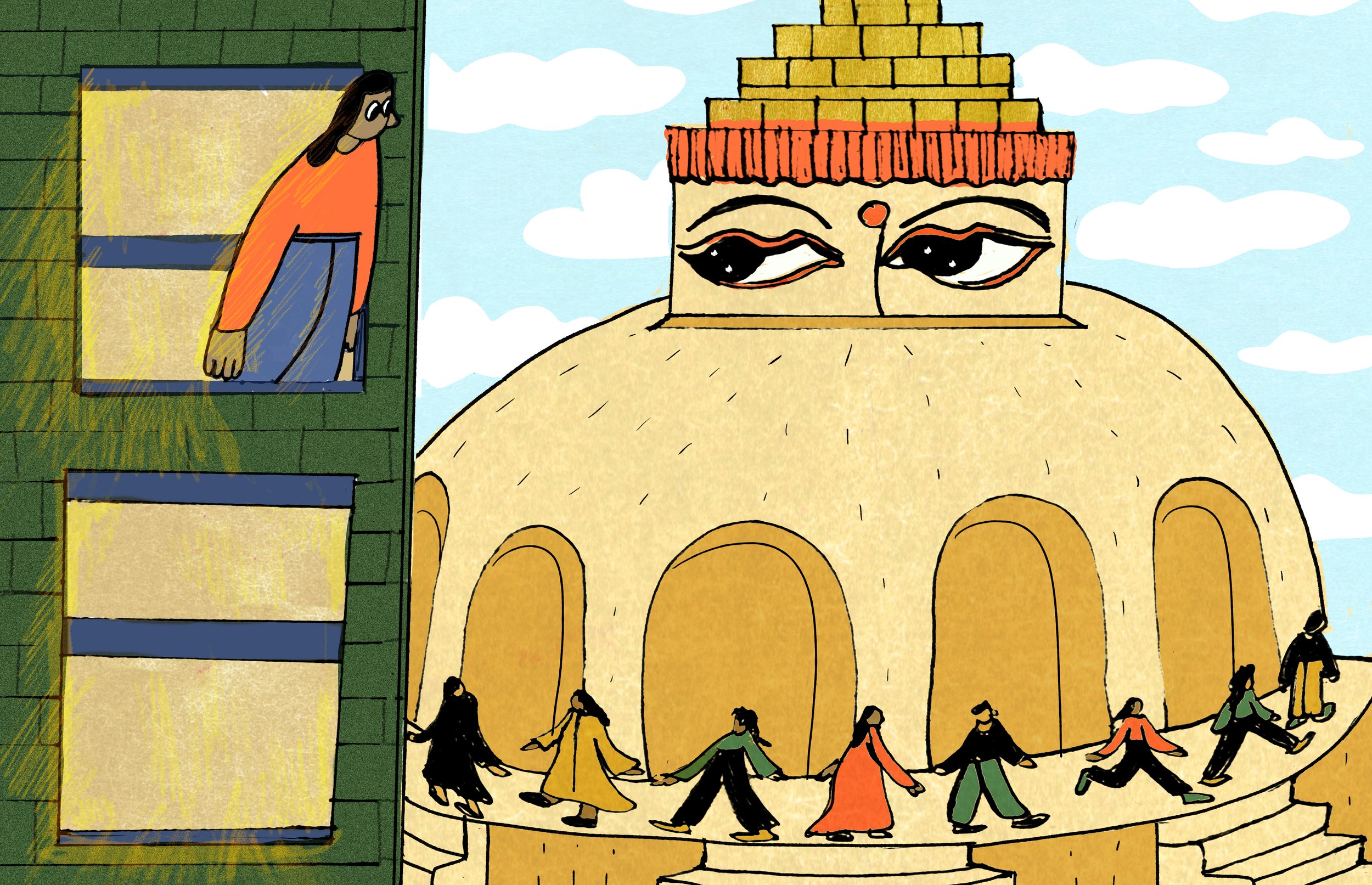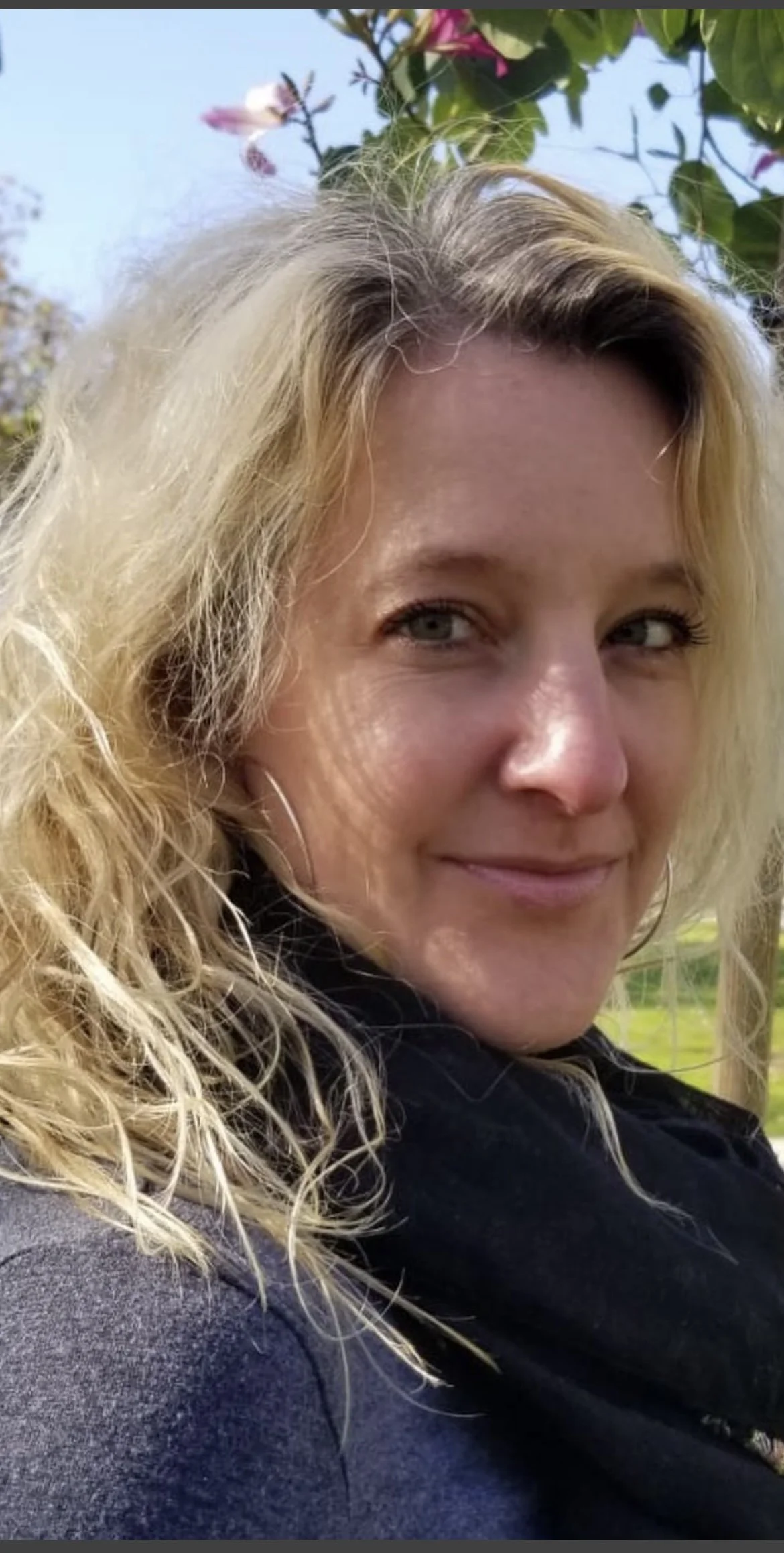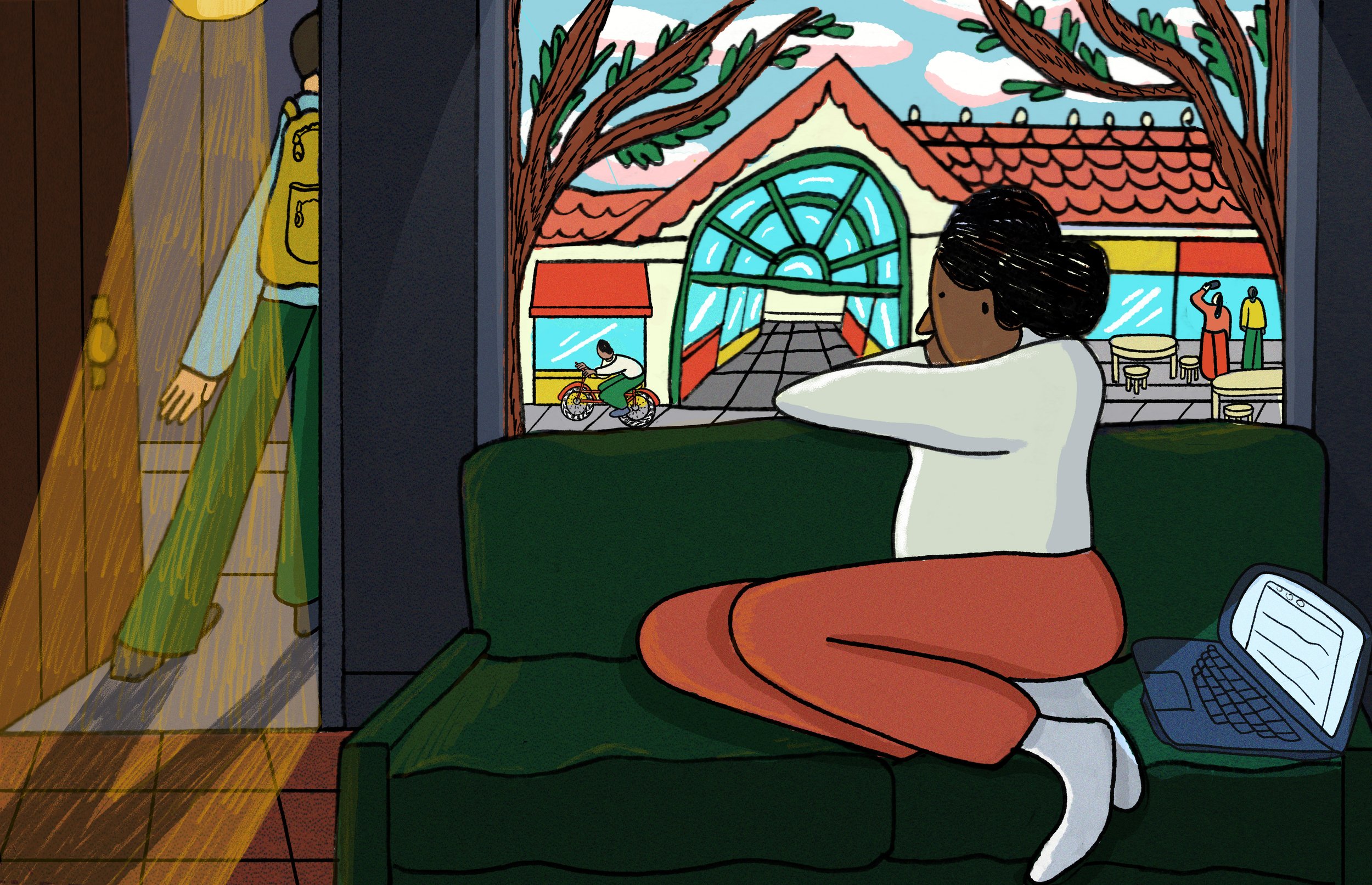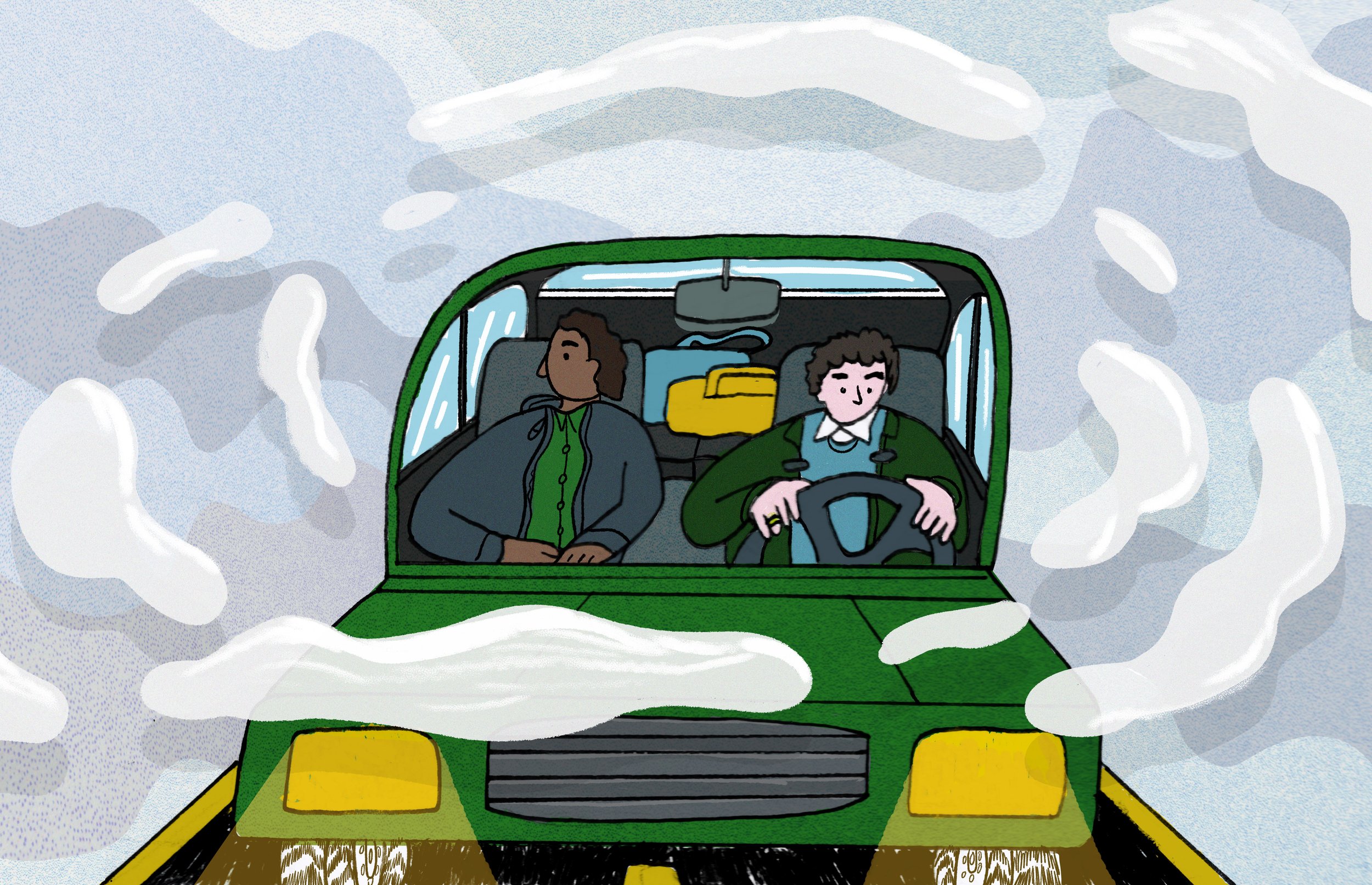6:32 a.m. at Boudhanath Stupa

6:32 a.m. at Boudhanath Stupa in Kathmandu is a rapid current of silence and hope, a clockwise ritual that welcomes me without question. I can come. I can go. I can pray. I can walk and pretend to pray. It is the hour of the observant, of chants and prostrations, of prayer and potential.
Morning prayer is boisterous as newborn sunlight casts promise across worshippers and merchants preparing for the day. Prayer is something I associate with stillness, but I bundle up to walk among strangers circling one of the largest stupas in Asia. I don’t know this kind of reverence—so active, so exposed. It’s everyone out all at once before they get carried away by their day, and I wonder if we pray for similar things: for hope, for healing, for loved ones, for protection, for starting over.
Entering the kora is like entering a traffic circle without signs. The kora has momentum, a kinetic stream requiring full awareness, like the relentless flow of motorcycles in the surrounding neighborhood streets. Everyone walks briskly: monks in long, burgundy robes, old women twisting prayer beads the colors of earth and sky, young guys in sweatshirts. I forget to pray, instead spinning prayer wheels and watching people’s shoes to make sure I don’t bump into anyone, all the sandals and sneakers, all the hiking boots and clogs.
On the ground are discarded marigold heads mashed flat by our footsteps. Nearby, a woman sweeps away debris and decaying flower petals with a broom made of stiff straw, a scratching sound that I circle past several times. Behind me, I turn to see a monk face down, and he rises again as quickly as he prostrates, the woodblock hand grips protecting his hands from scraping against the cold, hard, uneven cobblestones that surround the stupa. Ahead of me, another monk repeats this action: briefly lies prone, then quickly stands back up to walk a few steps before going down again. He becomes a cardinal wave, rising and falling as the woman with the broom clears a path.
The mountain air is cold and walking makes me feel alive, a brisk awakening at an hour when I am usually balled up in bed, not alongside chanting monks deep in prayer. Above me, a slimming full moon peeks from behind the stupa. I lose count of how many times I circle this centuries-old structure, its painted eyes watching in all four directions. I walk quickly but this doesn’t feel like exercise, and the more I follow the others, the more I lose myself. Here, prayer is movement, the opposite of stillness. Prayer flows, and I am now part of this current. I’m not sitting still in a church pew or on a yoga mat trying to quiet my mind. I am outside under a new sky in a country I have never visited before, walking with strangers in collective silence as we repeat rotations around this grand stupa. Maybe losing count of steps and time is the point. Maybe prayer is whatever we need it to be at any given moment.
I leave the kora unsure if I successfully prayed or meditated, and walk away past trays of butter ghee lamps. Shopkeepers lift gates. Someone sells plastic cups of dried juniper to burn as incense. Someone sells prayer flags. Stray dogs sleep off the night. Old people in thin jackets arrive with plastic red buckets of corn kernels, and dozens and dozens of pigeons immediately gather, because this is a ritual, too, waiting to see which tourists will spend a few rupees to feed them. Feeding birds is good karma. Passersby cut across the plaza, startling the pigeons and igniting a rhythmic beating of wings that briefly overwhelms the soft murmuring of prayer. Bells ring from all directions.
I admire the circles of saffron water recently thrown across the stupa’s dome to look like lotus petals. Later on, several floors up in my hotel room, I see those painted eyes, this time peeking out above the rooftops, observing me, inviting me back to try again.
About the Author
Katrina Woznicki's essays and reporting have appeared on the cover of AAA's Westways magazine as well as in The Toronto Star, The Washington Post, The Los Angeles Times, Catapult, Guernica, AFAR, Flung, and National Geographic Traveler. Her travel writing has taken her all over the world, and she has written on a variety of topics from eating green ants in Australia to visiting her favorite pub in London to sleeping in a giant man-made nest on the California coast. Her novel is represented by Word One Literary, an agency founded by Barbara Poelle. Katrina lives in Los Angeles.
Illustration by Jane Demarest.
Edited by Tusshara Nalakumar Srilatha.











